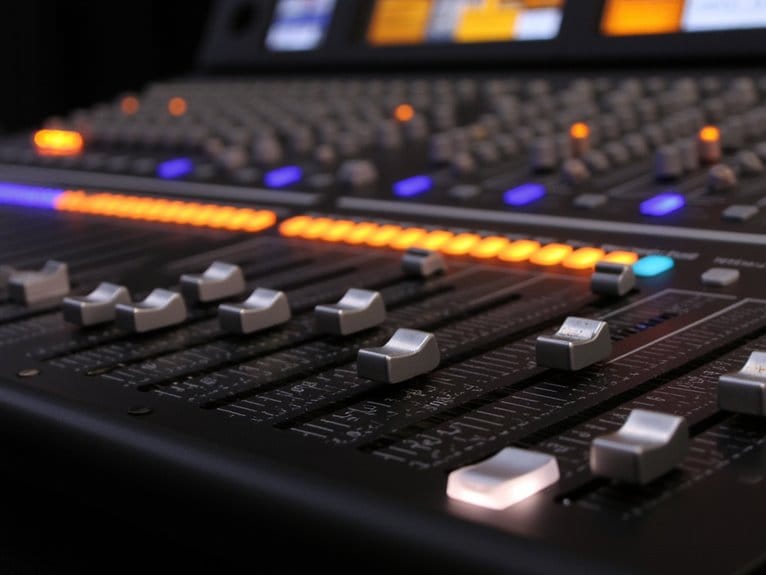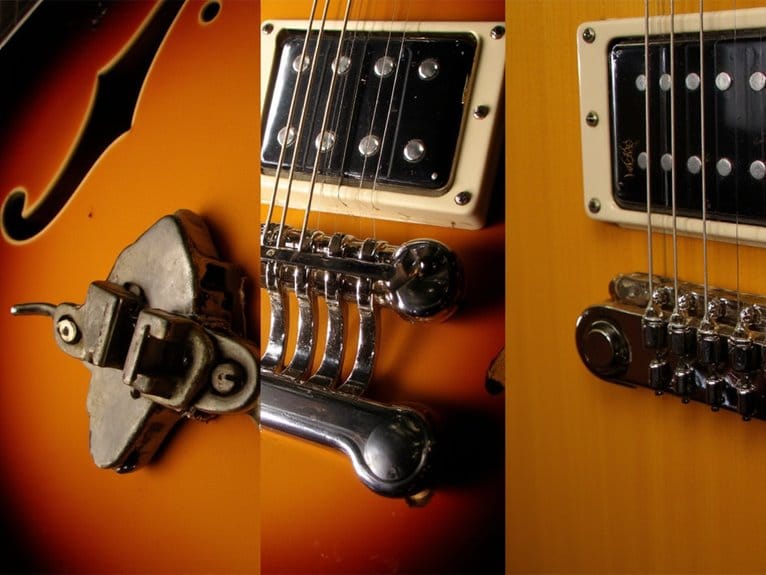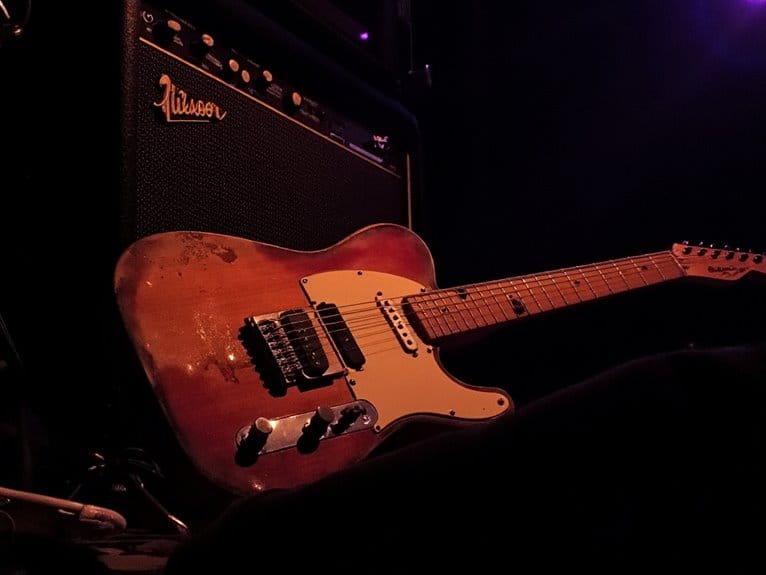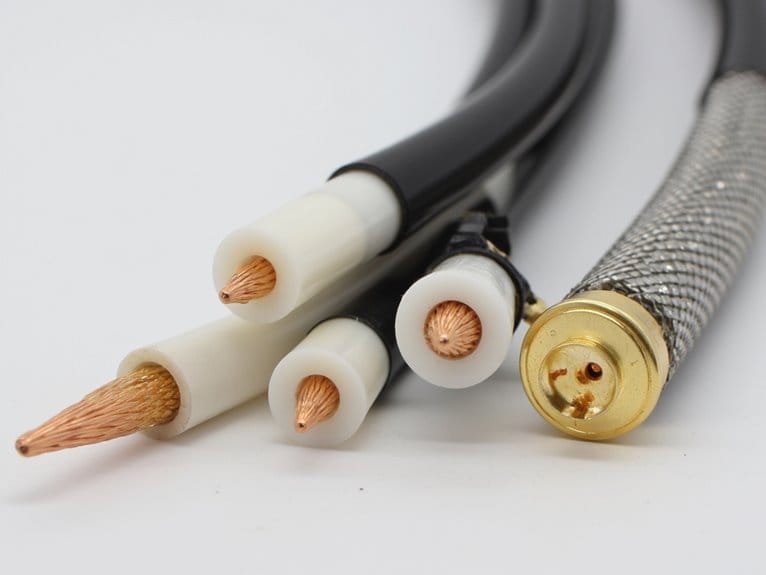Understanding Mixer Subgroups and VCA Faders
Subgroups function as specialized mix buses that sum multiple audio channels into a unified signal path, allowing you to apply collective EQ, compression, and effects processing to grouped instruments like drums or vocals. VCA faders take a different approach, using voltage-controlled amplifiers to remotely adjust individual channel levels without actually combining the audio signals, preserving your original routing while maintaining precise control over send effects and auxiliary ratios. Understanding the technical distinctions between these mixing tools will transform your workflow efficiency.
We are supported by our audience. When you purchase through links on our site, we may earn an affiliate commission, at no extra cost for you. Learn more.
Notable Insights
- Subgroups are specialized mix buses that consolidate multiple audio channels for collective processing and unified control.
- VCA faders remotely control channel levels without altering the audio path, preserving signal integrity and auxiliary send ratios.
- Subgroups enable shared EQ, compression, and effects processing across grouped channels while reducing CPU load and plugin instances.
- VCA automation provides precise dynamic control over multiple channels simultaneously without summing or routing audio signals together.
- Both tools streamline mixing workflow by allowing section-level adjustments without disturbing individual channel fader positions or settings.
What Are Subgroups and How Do They Work
Understanding subgroups starts with grasping their fundamental role as specialized mix buses that collect multiple audio channels into a single, controllable destination.
Subgroups function as specialized mix buses that consolidate multiple audio channels into one unified, controllable destination for streamlined mixing workflow.
When you route channels to a subgroup, you’re fundamentally creating an intermediary stage between individual faders and your main stereo output, allowing unified control over related elements like drum kits or vocal sections.
This setup enables applying processing such as EQ and compression collectively across grouped channels, which represents one of the key subgroup advantages for streamlining complex mixes.
However, subgroup limitations include the physical routing commitment required and potential signal path complications. Different mixers feature varying numbers of subgroups, each offering unique routing configurations that can significantly impact your mixing workflow.
The subgroup master fader controls volume levels without affecting other post-fader sends, maintaining your auxiliary routing flexibility. Subgroups provide built-in processing capabilities including EQ and compression that aren’t available with VCA grouping methods.
Core Functions of Auxiliary Mixer Channels
While subgroups funnel multiple channels into a unified control point, auxiliary channels take a fundamentally different approach by creating parallel signal paths that operate independently from your main mix. These aux send configurations enable you to route customized blends to monitors, effects processors, or headphone feeds without affecting your primary output.
| Function | Purpose |
|---|---|
| Pre-fader sends | Signal unaffected by channel fader position |
| Post-fader sends | Signal level follows channel fader movement |
| Effects routing options | Parallel processing advantages for reverb/delay |
| Monitor mix applications | Custom feeds for performers and engineers |
| Signal integration techniques | Returns processed signals back to mixer |
The live performance utility and studio workflow enhancements make auxiliary channels indispensable for professional mixing, offering customizable monitoring options that complement rather than replace traditional grouping methods. These auxiliary pathways function like highway interchanges, allowing multiple audio signals to converge and flow through organized routing structures for enhanced audio management. Budget mixers often include 48V phantom power for condenser microphones while maintaining auxiliary send capabilities essential for basic effects processing. This routing flexibility provides enhanced workflow streamlining that reduces operational stress during chaotic performance environments. Digital mixers with advanced features typically offer more sophisticated auxiliary routing options compared to their analog counterparts, enabling greater flexibility in complex live sound scenarios.
Creating Subgroups in Digital Audio Workstations
Where auxiliary channels create parallel paths, subgroups take a more direct approach by gathering multiple tracks into a consolidated signal chain that you can control as a unified element.
I’ve found that effective subgroup selection starts with identifying logical instrument families—drums, guitars, vocals—that benefit from collective processing and level control. Most DAWs streamline this process through track assignment menus, where you’ll select multiple channels and route their outputs to a dedicated auxiliary bus rather than the main stereo output.
Smart grouping strategies extend beyond basic categories, allowing nested arrangements where individual drum elements feed into specialized subgroups before reaching a master drum bus. The bus creation process automatically handles input routing configuration, eliminating manual setup steps that could introduce routing errors.
Nested subgroup hierarchies provide layered control, feeding specialized buses into master channels for both precision and organizational clarity in complex mixes.
Unlike VCA groups, subgroups enable signal processing on the combined audio signal, allowing you to apply EQ, compression, and other effects to the summed output. This hierarchical approach gives you granular control while maintaining the organizational benefits that make complex mixing sessions manageable and efficient.
Manual Setup and Routing Techniques
Once you’ve identified the tracks that belong together conceptually, the actual manual setup process requires deliberate routing decisions that’ll determine how your subgroup functions within the larger mix architecture.
The manual routing workflow involves specific steps that, when executed properly, create a clean signal path through your auxiliary bus without introducing unwanted artifacts or phase issues.
Here’s the essential manual routing sequence I follow:
- Create and name your auxiliary bus – Choose descriptive names like “Drums” or “Vocals” for instant recognition during mixing sessions
- Redirect individual track outputs – Route each desired channel from master output directly to your subgroup’s auxiliary bus input
- Un-assign from main mix bus – Remove original L/R assignments to prevent signal duplication and phase conflicts
- Route subgroup output appropriately – Connect your auxiliary bus output back to the master mix or another destination as needed
This approach maintains signal clarity while avoiding the overly complex routing schemes that can make your mixing session difficult to navigate and troubleshoot. The setup process remains remarkably comparable across different digital mixing consoles, making these techniques transferable between various mixing platforms.
Signal Flow Through Subgroup Channels
When you’re working with subgroups, you’ll notice that the audio signal summation process combines multiple channels into a unified output that maintains the integrity of each individual source while allowing collective control over the grouped elements.
Your signal then travels through a carefully designed routing path to the master output, where the subgroup’s combined audio becomes part of your main mix, giving you the flexibility to adjust entire sections of your mix without touching individual channel faders.
The effects processing chain within subgroup channels operates independently from your individual channel effects, allowing you to apply compression, EQ, or other processing to the summed signal, which can create cohesive sonic characteristics across all channels assigned to that particular subgroup. This routing configuration also enables parallel processing where you can duplicate the subgroup signal path to apply different effects or processing treatments simultaneously.
Additionally, subgroups can be routed to recording devices for capturing isolated sections of your mix, providing greater flexibility for post-production work and multitrack recording sessions.
Audio Signal Summation Process
As signals from your individual input channels make their way toward a subgroup, they’re fundamentally converging at a central meeting point called the subgroup bus, where the real magic of audio summation begins to unfold.
This subgroup summation process involves electrical or digital signal blending that combines voltage streams from multiple channels, creating a unified mix before reaching your subgroup fader.
Here’s what happens during this critical phase:
- Signal Convergence – Multiple channel signals combine their amplitudes at the subgroup bus, influenced by each channel’s fader position.
- Level Interaction – The summed signal reflects combined input levels, potentially creating phase or frequency overlaps between layered sources.
- Pre-Fader Processing – Summation occurs before the subgroup fader, meaning individual channel adjustments directly impact the grouped mix.
- Format Preservation – The combined output maintains stereo or mono configuration depending on your subgroup’s designated setup.
Routing to Master Output
After your signals complete their summation at the subgroup bus, they commence on the final leg of their journey toward your main output, where the subgroup fader becomes your command center for controlling the entire group’s contribution to the overall mix.
This subgroup routing creates an intermediate processing stage that forwards your grouped signals directly to the master output bus, fundamentally functioning as a controllable funnel between your individual channels and final mix destination.
You’ll need to guarantee channels aren’t simultaneously feeding both the subgroup and main LR mix, unless you’re intentionally doubling signals for creative effect.
The subgroup’s stereo pair sums all routed channel signals before sending them to your master output, giving you centralized control over group volumes during your final mixdown process.
Effects Processing Chain
Once your signals have converged at the subgroup level, you’ll discover that this consolidated signal path creates an incredibly efficient staging ground for effects processing, where a single plugin can simultaneously shape multiple tracks without the CPU overhead of running identical effects across individual channels.
The subgroup dynamics allow for collective processing that transforms your workflow, and I’ve found this approach consistently delivers more cohesive results than individual track processing.
Here’s how the effects chain typically flows through subgroups:
- EQ shaping – Apply broad tonal corrections to the entire group
- Compression – Control dynamics across all assigned tracks uniformly
- Saturation/color – Add harmonic richness to the summed signal
- Time-based effects – Insert reverb or delay for spatial enhancement
This collective processing maintains each track’s relative balance while applying unified character.
Understanding VCA Fader Technology
While you’ve learned how subgroups physically route audio signals through dedicated buses, VCA faders operate entirely differently by controlling channel levels remotely without ever touching the actual audio path.
You’ll find that VCA signal flow works more like a sophisticated remote control system, where adjusting a single VCA fader simultaneously influences multiple channel faders while maintaining their relative positions and preserving all original routing, sends, and processing.
This remote volume control approach, combined with VCA automation benefits like grouped level rides and simplified mix management, makes VCAs particularly valuable when you need to maintain complex routing structures while gaining streamlined control over multiple elements simultaneously.
VCA Signal Flow
When you’re working with VCA faders, you’re fundamentally commanding a remote control system that operates fundamentally differently from traditional audio routing, and honestly, this distinction trips up even experienced engineers who expect these faders to behave like conventional groups.
Understanding VCA signal flow reveals several critical operational characteristics:
- Level Modulation Only – VCAs adjust amplification levels without processing or routing audio signals through different paths.
- Proportional Control – All assigned channels maintain their relative balance while the VCA fader influences their collective output.
- Post-Fader Send Preservation – Effects and auxiliary sends retain proper dry/wet ratios since everything scales proportionally.
- Automation Integration – VCA configuration supports centralized volume automation across multiple channels simultaneously.
VCA advantages include streamlined mixing workflows, while VCA limitations involve their inability to process audio directly, making VCA applications ideal for efficient level management.
Remote Volume Control
VCA fader technology operates through a fundamentally different mechanism than the audio routing we’ve just examined, relying on voltage control signals to command remote amplification adjustments rather than physically manipulating audio pathways.
When you move a VCA fader, you’re sending control voltage to multiple channel amplifiers simultaneously, creating what I consider one of the most elegant remote fader technology solutions in mixing. This voltage-based approach delivers significant fader control advantages, allowing you to maintain individual channel integrity while executing group volume adjustment techniques effortlessly.
The automated control benefits become apparent during complex sessions, where you can ride entire instrument sections with a single gesture, preserving your carefully crafted mix balances without the signal path complications that traditional subgroups might introduce into your workflow.
VCA Automation Benefits
Once you’ve experienced the automation capabilities that VCA faders bring to your mixing workflow, you’ll quickly understand why I consider them indispensable for complex sessions requiring precise, dynamic control over multiple channels simultaneously.
VCA fader versatility shines through automation because you’re controlling volume without disrupting your original signal routing, preserving individual track processing while managing groups collectively.
VCA layering techniques become particularly powerful when you’re automating complex arrangements, allowing you to create sophisticated volume envelopes across multiple sections without the phase issues common in subgroup busses.
Here’s what makes VCA automation exceptional:
- Graphical feedback in DAWs provides clear visualization of volume changes across entire groups
- Proportional control maintains relative balance between assigned channels during automated moves
- Signal integrity preservation since audio doesn’t pass through the VCA group channel itself
- Master control point automation affects all assigned channels consistently without altering individual track settings.
Vocal Group Management
While drum bus processing focuses on creating punch and cohesion, vocal group management requires a more delicate approach that balances clarity, warmth, and spatial positioning across multiple vocal layers.
I’ve found that effective vocal layering techniques start with organizing your tracks by type—lead vocals, harmonies, and doubles—then routing them through subgroups for unified control. Your harmonization strategies become much more manageable when you apply reverb and delay through effect sends, creating that cohesive sonic space without overwhelming individual tracks.
I recommend using parallel compression on your vocal bus to maintain dynamic range while evening out inconsistencies. This approach streamlines your workflow markedly, allowing you to focus on the creative aspects rather than wrestling with technical complications across multiple channels.
CPU Optimization Through Strategic Grouping

Strategic CPU optimization through mixer subgroups transforms what could be a processor-intensive mixing session into a streamlined, efficient workflow that I’ve found consistently reduces system strain while improving overall mix quality.
When you’re managing forty-plus tracks, subgroup advantages become immediately apparent as you consolidate processing power rather than taxing your system with individual track effects. VCA integration allows you to maintain mixing efficiency while preserving audio coherence across grouped elements, and I’ve noticed significant workflow enhancement when combining strategic track organization with intelligent plugin management.
Here’s how I approach CPU optimization through subgroups:
- Consolidate similar instruments into single subgroups to reduce plugin instances
- Apply uniform effects at the subgroup level instead of individual tracks
- Use VCA faders for level control while maintaining signal optimization
- Group vocal stacks together for consistent processing and mixing consistency
Professional audio interfaces with ultra-low-noise preamps provide the foundation for clean signal flow into your subgroups, ensuring optimal audio quality before any processing occurs. Implementing zero-latency monitoring during the tracking phase ensures precise timing alignment when building the layered elements that will later benefit from subgroup organization.
Frequently Asked Questions
Can I Use Both Subgroups and VCA Faders Together on the Same Channels?
Yes, you can absolutely use both subgroups and VCA faders on the same channels since they operate differently in your signal chain.
I’ve found that subgroup routing handles the audio summing and processing, while VCA control manages volume levels without affecting the actual audio path.
This combination gives you incredible flexibility, allowing you to maintain your subgroup’s mixed output while still having unified volume control across multiple channels simultaneously.
Do Subgroups Introduce Latency Compared to Direct Channel Routing to Master Outputs?
Yes, subgroups typically introduce minimal subgroup latency compared to direct routing, though it’s usually imperceptible in most applications.
When you route channels through subgroups, there’s an additional processing step where signals get summed before reaching master outputs, while direct routing sends channels straight to the master bus.
Digital mixers show slightly more latency than analog consoles, but modern units optimize routing paths to minimize timing differences between these methods.
How Many Channels Can I Typically Assign to a Single Subgroup or VCA?
Your subgroup capacity typically ranges from 8 to 32 channels per group, depending on your mixer’s architecture, though I’ve seen some digital consoles handle virtually unlimited assignments.
For channel organization, you’ll find most analog mixers offer 4-8 subgroups with moderate capacity, while digital boards like the X32 provide more flexible routing.
VCAs aren’t technically limited since they’re control-only, but practical management suggests keeping groups manageable.
Can I Automate Subgroup Faders Differently Than Individual Channel Faders in My DAW?
You can absolutely automate subgroup faders independently from individual channel faders, and honestly, this flexibility transforms your channel mixing workflow.
I’ve found that subgroup automation excels for sweeping group-level changes, like gradually fading entire drum sections, while individual channel automation handles precise, track-specific adjustments.
Most DAWs let you layer both automation types simultaneously, creating sophisticated dynamic control that wouldn’t be possible with either approach alone.
Will Using Subgroups Affect My Mix’s Stereo Imaging and Panning Capabilities?
Subgroups won’t compromise your panning precision or stereo width if you’re strategic about implementation.
When you route channels to stereo subgroups, individual pan settings remain intact, preserving your mix’s spatial characteristics.
However, mono subgroups will collapse stereo imaging unless you pair them left/right.
I’ve found that proper subgroup configuration actually enhances stereo control, allowing group-wide processing while maintaining each channel’s position.
On a final note
You’ve now got the essential foundations for implementing subgroups and VCA faders effectively in your mixing workflow, whether you’re working in a DAW environment or handling live sound applications. I’ve found that starting with basic drum and vocal grouping gives you immediate benefits while building confidence with these powerful tools. Remember, there’s no single correct approach—experiment with different routing strategies, optimize your CPU usage through strategic grouping, and don’t hesitate to adapt these techniques to match your specific project requirements and creative vision.







